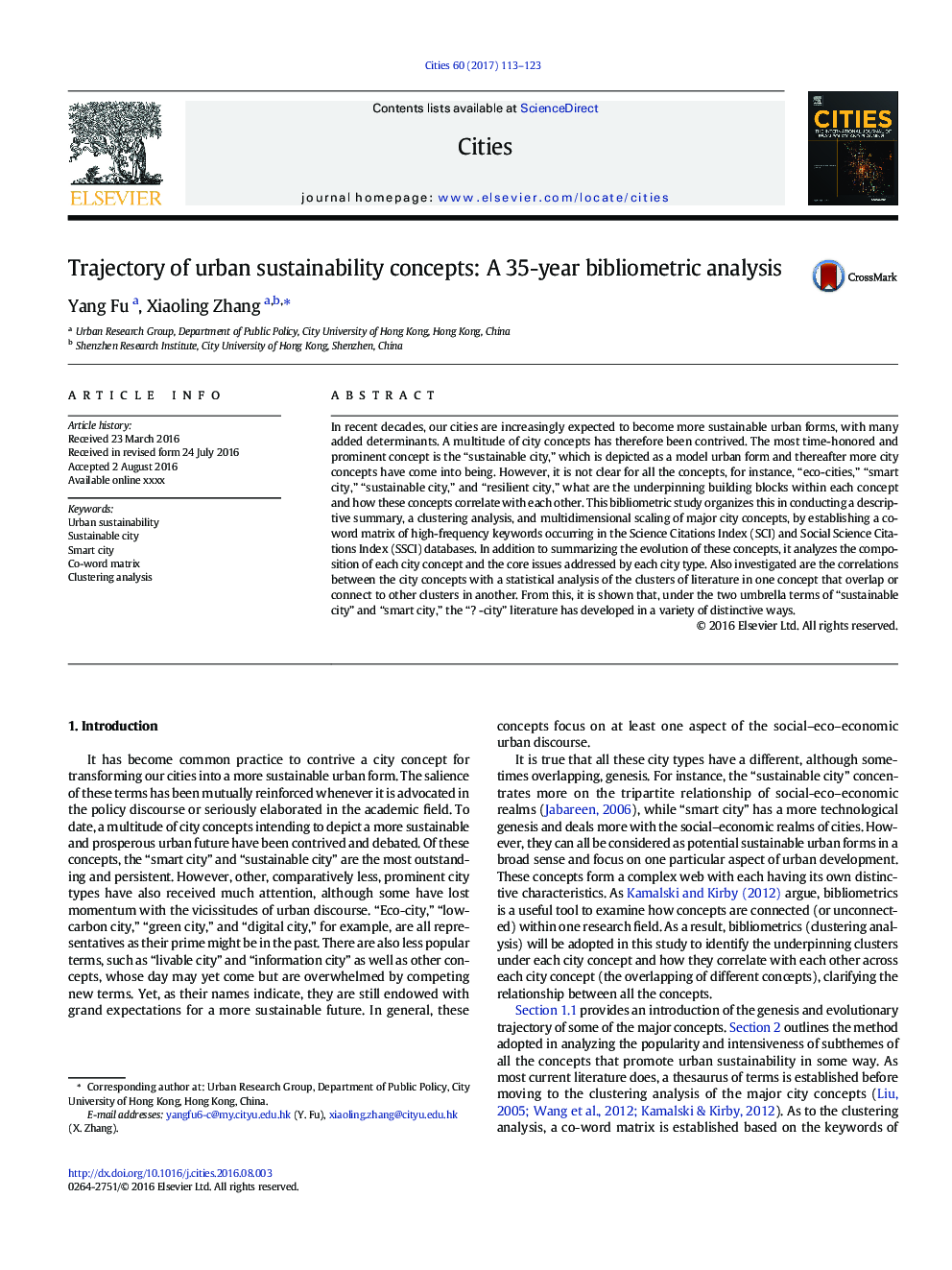| Article ID | Journal | Published Year | Pages | File Type |
|---|---|---|---|---|
| 1008160 | Cities | 2017 | 11 Pages |
•A typological analysis is used to review city concepts that underpin urban sustainability.•A co-word matrix of high frequency keywords of city concepts is established.•The origin and evolution of city sustainability concepts are revealed.•The correlations between the city concepts are indicated by clustering analysis.
In recent decades, our cities are increasingly expected to become more sustainable urban forms, with many added determinants. A multitude of city concepts has therefore been contrived. The most time-honored and prominent concept is the “sustainable city,” which is depicted as a model urban form and thereafter more city concepts have come into being. However, it is not clear for all the concepts, for instance, “eco-cities,” “smart city,” “sustainable city,” and “resilient city,” what are the underpinning building blocks within each concept and how these concepts correlate with each other. This bibliometric study organizes this in conducting a descriptive summary, a clustering analysis, and multidimensional scaling of major city concepts, by establishing a co-word matrix of high-frequency keywords occurring in the Science Citations Index (SCI) and Social Science Citations Index (SSCI) databases. In addition to summarizing the evolution of these concepts, it analyzes the composition of each city concept and the core issues addressed by each city type. Also investigated are the correlations between the city concepts with a statistical analysis of the clusters of literature in one concept that overlap or connect to other clusters in another. From this, it is shown that, under the two umbrella terms of “sustainable city” and “smart city,” the “? -city” literature has developed in a variety of distinctive ways.
